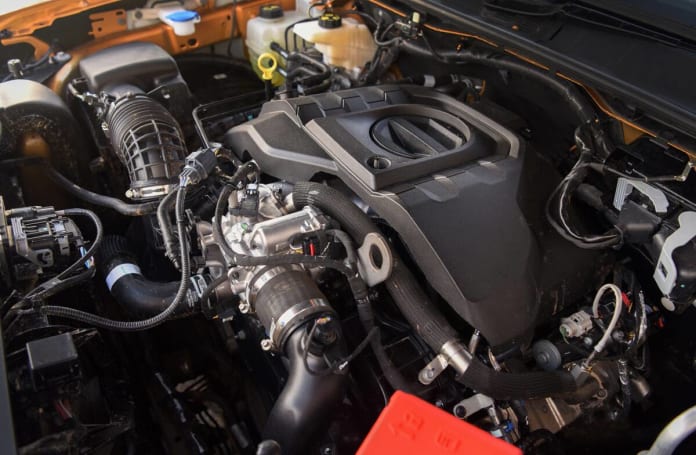
European electric car slashed nearly $20,000: Cupra Born in run-out with huge offers for MG4 hatch, Tesla Model 3 and Polestar 2 alternative
The Volkswagen Group’s first electric car to arrive in Australia is now being...
Browse over 9,000 car reviews

Ford has revealed the efforts it has gone to bring the fuel consumption of the new Ranger ute down.
This is despite the Australian engineers facing an uphill battle on a number of fronts, as the new mids-ized pick-up has grown heavier, wider and more box-like compared to the outgoing version.
Speaking to CarsGuide at the launch of the T6.2-generation medium-sized pick-up near Melbourne last week, Ford’s powertrain engineering manager, Pritika Maharaj, explained how several actions coalesced to improve economy across the range, beginning with much newer engines.
“You have to keep in mind the engine technology has moved on significantly over the years,” she said. “The latest versions by design are more efficient than before.”
Taking a cross-section of the bewildering array of T6.2 models and grades on offer, the combined average fuel consumption figures are: XL Single Cab chassis 2.0-litre single turbo-diesel 4x2 auto at 7.6L/100km, for a corresponding 199 grams per kilometre of carbon dioxide emissions; XLT Super Cab pick-up 2.0-litre twin turbo-diesel 4x4 auto at 7.2L/100km, for 189g/km of CO2 emissions; and Sport Double Cab pick-up 3.0-litre V6 turbo-diesel 4WD at 8.4L/100km, for 222g/km of CO2 emissions.
While there is no corresponding PX III Ranger V6 turbo-diesel to compare figures against, there is an average 0.2 litre per 100km improvement in the four-cylinder turbo diesel models.
Although this may not sound like much, the T6.2 Ranger weighs a lot more than before - in the case of the popular Wildtrak 2.0-litre four-cylinder BiTurbo (which actually produces slightly less power now at 154kW but the same torque maximum at 500Nm), the gain in mass is in the tune of 100kg.
This is due to its completely different and stronger front-end structure, some larger powertrain and suspension components, higher specification levels (such as nine airbags), increased cabin equipment, more sound-deadening measures and a redesigned tub that now features more standard accessories.

It is also interesting to note that the new 184kW/600Nm 3.0-litre V6 turbo-diesel’s 8.4L/100km average is half a litre better per 100km than the outgoing 147kW/470Nm 3.2-litre five-cylinder turbo-diesel’s 8.9L/100km rating.
This is despite the larger engine being substantially more powerful than before, while in Wildtrak guises, the old five-cylinder model weighs in at 121kg under the new V6 equivalent.
Along with being a newer engine design, the V6 features stop/start technology that can contribute upwards of a 10 per cent cut in consumption and emissions – so don’t switch that off please.

Additionally, the 10R80 10-speed automatic transmission has been revised, with newer components and a different state of tune, to promote more efficient operation.
However, it is not just the powertrains themselves that help make the T6.2 more economical.
According to Ford engineering manager, Anthony Hall, the new Ranger’s hydroformed front end has allowed for a far-more effective cooling system, that – combined with a new electric fan set-up – creates more-ideal operating temperatures more of the time, promoting efficiency.
Then there is the aerodynamic finessing that has been carried out all around the car.

Ford Australia design manager, and the person who sketched one of the first T6.2 styling proposals, Leigh Cosentino, revealed that every aspect of the new body work and sheetmetal was done with improved aero efficiency in mind.
Tested extensively at the Monash University wind tunnel facility in Melbourne as well as at Ford headquarters in Detroit, the new Ranger’s aerodynamic highlights include a wind-cheating air dam up front, rear header, tailgate spoiler, exterior mirrors and wheel arches, while the shape and surfacing of the sheetmetal also came under attention.
“The overall swell shape of the P703 really helps cut airflow around the vehicle,” Mr Cosentino said.
Finally, low-resistance tyres are also part of the package to help keep fuel consumption down.
Comments